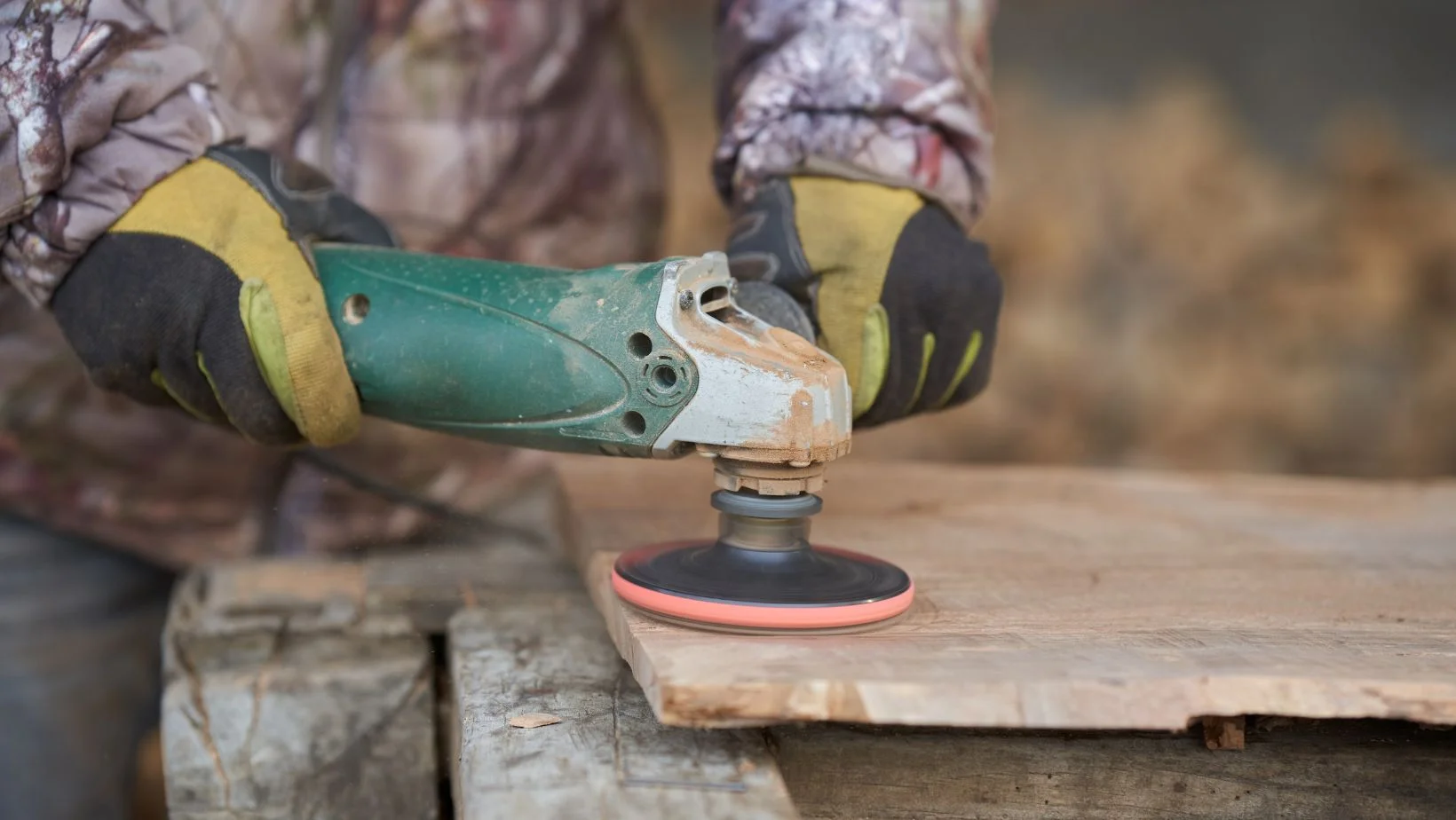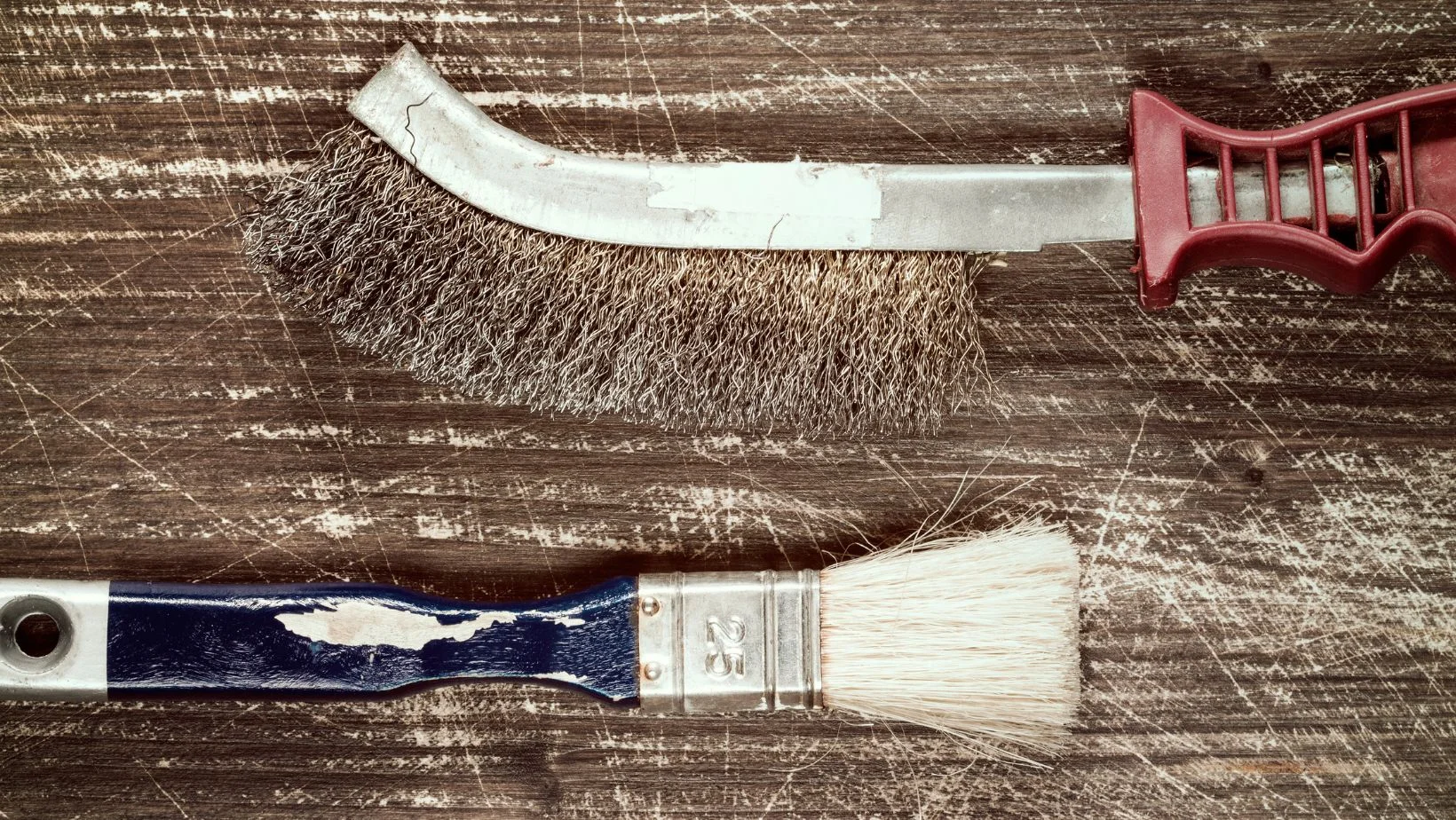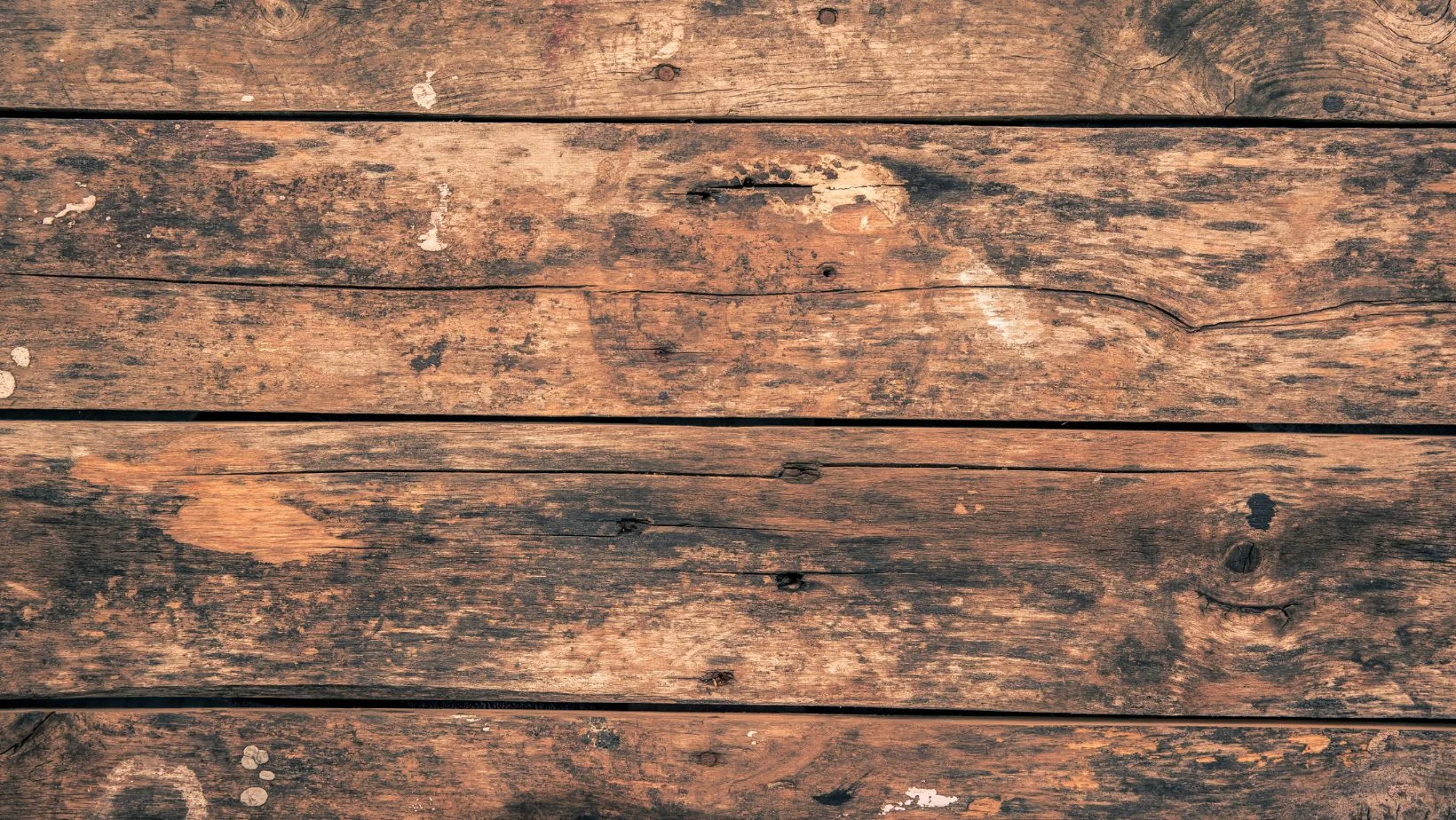There’s something undeniably charming about the rustic, weathered look of distressed wood. Whether you’re aiming for a farmhouse aesthetic or simply want to add a bit of vintage flair to your space, distressing wood is a fantastic way to achieve that timeless appeal. The best part? You don’t need to be a seasoned carpenter or spend a fortune to get this look. Here are eight easy techniques to help you transform new wood into beautiful, rustic pieces that look like they’ve been aged to perfection.
How to Distress Wood
Sand to Create a Worn Surface
The simplest way to start distressing wood is by using sandpaper. By selectively sanding areas of your wood, you can create the appearance of natural wear and tear. Focus on edges, corners, and any areas that would naturally receive the most use. For a more authentic look, use coarse-grit sandpaper (like 60 or 80 grit) to remove the top layer of paint or stain.
Beat with a Chain
Want to add some character to your wood? Try lightly beating it with a chain. This technique creates random dents and dings, mimicking the natural aging process. You can also use other tools like hammers, screwdrivers, or even a bag of nails to create different types of indentations. The key is to be random and varied with your strikes to avoid a pattern.
Use a Wire Brush for Texture
A wire brush is a great tool for adding texture to your wood. By running the brush along the grain, you can create small grooves and scratches that give the wood a more rugged appearance. This technique is particularly effective on softwoods like pine. After brushing, apply a stain to highlight the texture.
Apply Wood Stain
Staining will make any surface imperfections from previous steps more pronounced. The stain tends to settle into these divots, making them darker and more visually striking.
Spend extra time on these areas for a more dramatic effect. By applying a generous amount of stain and allowing it to penetrate the wood longer, you can enhance the depth and contrast, creating a richer and more appealing finish.
Tea Staining
Tea staining is a chemical reaction that occurs when the bitter tannin from steeped tea reacts with a combination of iron acetate from steel wool and vinegar, turning the wood a black hue.
Black tea is brewed and left to cool till room temperature. Steel wool is soaked in vinegar in a separate container and left for approximately 10 hours. When steel wool is mixed with an acidic liquid (vinegar), the steel oxidizes (rusts), resulting in iron acetate.
When both solutions are ready, apply the tea to the wood and let it soak in. Next, brush on the iron acetate solution and watch as the wood gradually darkens.
Creating Faux Wormholes
Wormholes are a hallmark of truly aged wood, and they’re surprisingly easy to replicate. Simply use a small nail or an awl to poke tiny holes in the surface of your wood. Make sure to scatter them randomly and vary the depth and size of the holes for a natural effect.
Dry Brushing for a Weathered Paint Look
Dry brushing is a technique where you use a brush with very little paint to lightly coat the surface of the wood. This gives the wood a weathered, faded appearance. Choose a color that contrasts with the base coat to make the effect more pronounced. For a more subtle look, use a shade that’s just a few tones lighter or darker than your base color.
Build Up Layers
Using any of the methods mentioned above will effectively create a weathered look on fresh wood. However, the key to achieving a truly impressive distressed wood appearance lies in layering different techniques.
This approach mirrors the natural aging process of wood, which often undergoes multiple layers of paint, various types of damage, and prolonged exposure to the sun, leading to its distinctive faded look. By applying a combination of distressing methods, you can mimic this natural look. The more layers of treatment your wood receives, the more authentic and visually appealing the final result will be.
Distressing wood is all about embracing imperfections and experimenting with different techniques to achieve the look you want. Whether you’re working on furniture, picture frames, or decorative accents, these easy methods can help you create pieces that look like they’ve been cherished for generations. So grab your tools, get creative, and enjoy the process of turning new wood into something with rustic charm and character.











